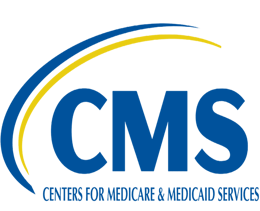
Among other items, the proposal extends most COVID-19 freedoms to the end of 2023, along with some coverage for FQHCs and RHCs. Telehealth advocates will be pleased with the CMS proposed fee structure for physicians for 2022.
Some proposals will make many provisions that were enacted to become permanent. Many of these were used in addressing the COVID-19 pandemic and will continue through December 23, 2023. While the 1747-page proposal proposes many of these new provisions, there is time for them to be evaluated. This will include whether or not they should become a permanent addition to telehealth services since the onset of COVID-19.
A proposed CMS policy would eliminate geographical restrictions of the coverages for mental health. This will allow patients to receive care from home. This is also dependent on if a patient meets their telemental health providers in person. This is recommended that a beneficiary visit their physician at least once within six months. The process starts within the first six months once a patient starts any of their telehealth services.
According to CMS, the agency wants to know if different intervals are appropriate or necessary when supplying any needed telemental health services using audio-only equipment. The proposed rule also seeks feedback on the best way to handle particular situations. One is where a patient's physician from a matching specialty or subspecialty may be needed to provide mental health services. This will be helpful if a patient's current physician is unavailable.
In a rule amendment that considers the use of audio-only telehealth, the CMS intends to add in the inclusion of any audio-only telehealth. This is specifically targeted toward providing that it is used in the home to diagnose, evaluate, or treat any of a patient's issues that pertain to their mental health. This way, CMS can continue to focus on real-time, two-way, audio-visual telemedicine technology.
CMS proposes using audio-only interactive telecommunications systems. They want to use this for services that deal with a patient's mental health. Practitioners can offer two-way audio/video communications. However, it can’t be used for beneficiaries who cannot use or do not wish to use two-way audio/video technology. Additionally, CMS proposes introducing modifiers that would help certify that a practitioner could deliver two-way audio/video communications needed but decided instead to use audio-only technology. However, this will be based on a beneficiaries' desires or limited ability to use the technology.
CMS is currently looking for comments on the following proposals. One of them is justifying how appropriate it is to use audio-only telehealth. More documentation may need to be included in the patient's medical records. Another proposal being decided is whether audio-only telehealth is something that should be prohibited, especially for many of the higher level services. These services include visits for level 4 or 5 E/M. They may also seek to restrict psychotherapy that comes with crisis intervention and what additional safeguards are necessary to minimize the impact on patient safety and health program integrity.
Also, CMS intends to include more telemental health services. These are services that will be offered by many FQHCs or federally qualified health centers. This will also include RHCs or rural health clinics as a Medicare benefit. The agency is submitting these proposals to cover many of these services that deal with a patient's mental healthcare being delivered remotely. Especially care using audio-only telehealth, even though neither of them is a designated distant site practitioner for telehealth.
According to CMS, it is reviewing the payment codes for E/M visits "ongoing." The changes outlined within a press release from the CMS do not affect RPM coverage. However, the document is under review by experts to see whether they will be used in the future.
A comment deadline of September 13 has been set for the proposals.